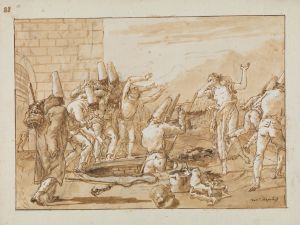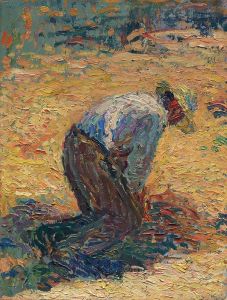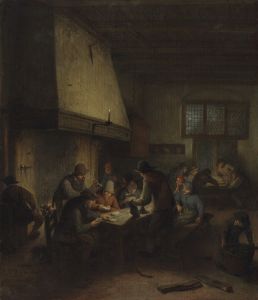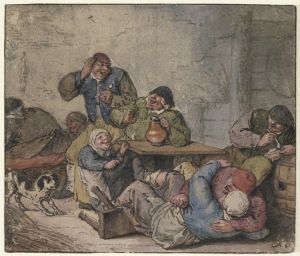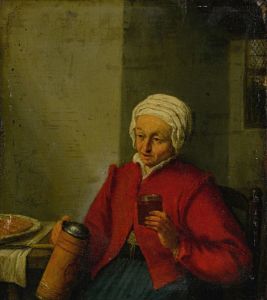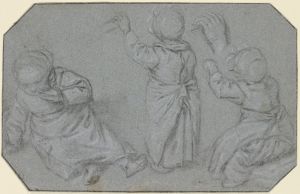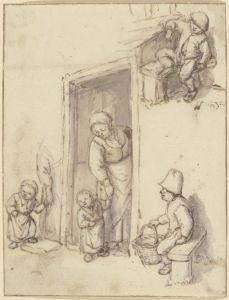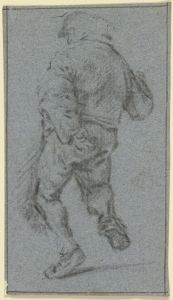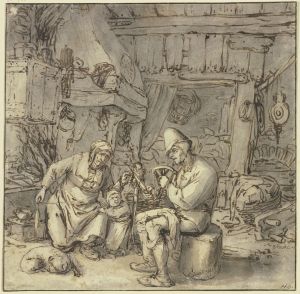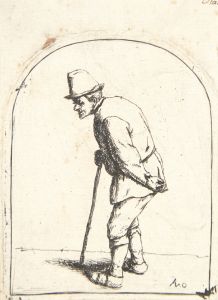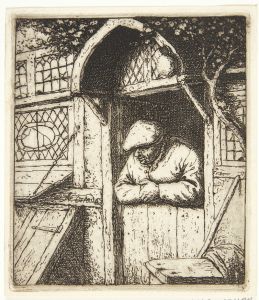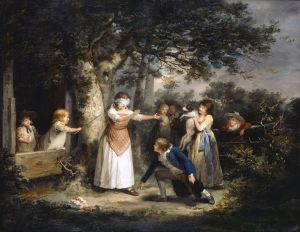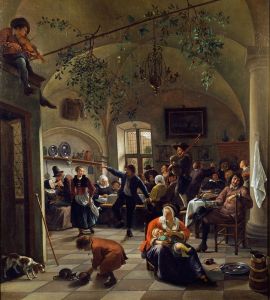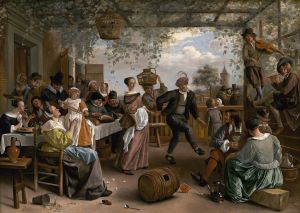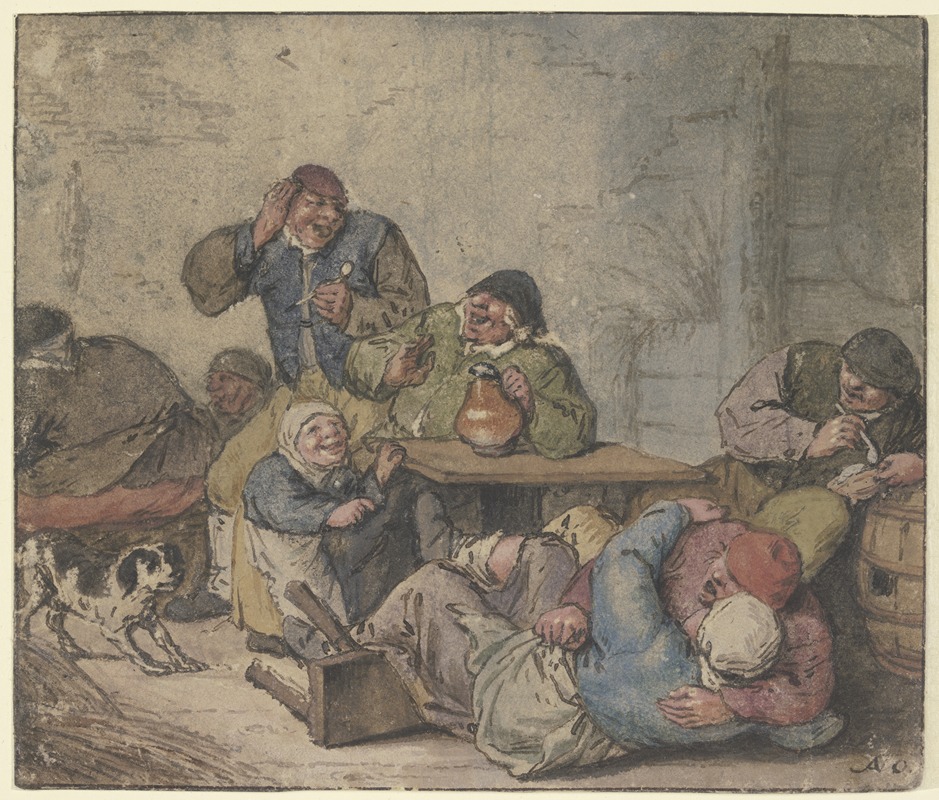
Ausgelassene Bauern im Wirtshaus
A hand-painted replica of Adriaen van Ostade’s masterpiece Ausgelassene Bauern im Wirtshaus, meticulously crafted by professional artists to capture the true essence of the original. Each piece is created with museum-quality canvas and rare mineral pigments, carefully painted by experienced artists with delicate brushstrokes and rich, layered colors to perfectly recreate the texture of the original artwork. Unlike machine-printed reproductions, this hand-painted version brings the painting to life, infused with the artist’s emotions and skill in every stroke. Whether for personal collection or home decoration, it instantly elevates the artistic atmosphere of any space.
Adriaen van Ostade was a prominent Dutch Golden Age painter known for his genre scenes depicting peasant life. One of his notable works is "Ausgelassene Bauern im Wirtshaus," which translates to "Merry Peasants in the Tavern." This painting exemplifies van Ostade's skill in capturing the lively and often boisterous atmosphere of rural Dutch life in the 17th century.
Born in 1610 in Haarlem, van Ostade was a student of Frans Hals, a master portraitist whose influence is evident in van Ostade's dynamic compositions and expressive characterizations. Van Ostade's work is characterized by its detailed observation of everyday life, often focusing on the lower classes, which was a popular subject during the Dutch Golden Age.
"Ausgelassene Bauern im Wirtshaus" is a quintessential example of van Ostade's ability to depict scenes of merriment and revelry. The painting portrays a group of peasants gathered in a tavern, engaging in various activities such as drinking, smoking, and playing music. The setting is a rustic interior, typical of the period, with wooden beams and simple furnishings that add to the authenticity of the scene.
Van Ostade's use of light and shadow is particularly noteworthy in this painting. He employs chiaroscuro to create a warm, inviting atmosphere, highlighting the faces and gestures of the figures, which are rendered with a high degree of realism and individuality. The artist's attention to detail extends to the objects scattered around the room, such as jugs, pipes, and musical instruments, which contribute to the narrative of the painting.
The composition of "Ausgelassene Bauern im Wirtshaus" is carefully arranged to guide the viewer's eye through the scene. The figures are positioned in a way that creates a sense of movement and interaction, drawing the viewer into the lively environment. Van Ostade's ability to capture the nuances of human expression and body language is evident in the varied poses and expressions of the peasants, each contributing to the overall sense of joy and camaraderie.
This painting, like many of van Ostade's works, reflects the social and cultural context of the time. The 17th century in the Netherlands was a period of economic prosperity and cultural flourishing, and genre paintings like this one were highly sought after by the burgeoning middle class. They provided a glimpse into the lives of ordinary people, celebrating the simple pleasures and communal activities that were an integral part of rural life.
Adriaen van Ostade's "Ausgelassene Bauern im Wirtshaus" remains an important work within the canon of Dutch genre painting. It not only showcases the artist's technical prowess and keen observational skills but also offers insight into the social dynamics and cultural values of the Dutch Golden Age. Through his depiction of merry peasants in a tavern, van Ostade invites viewers to appreciate the vibrancy and humanity of everyday life in 17th-century Holland.





